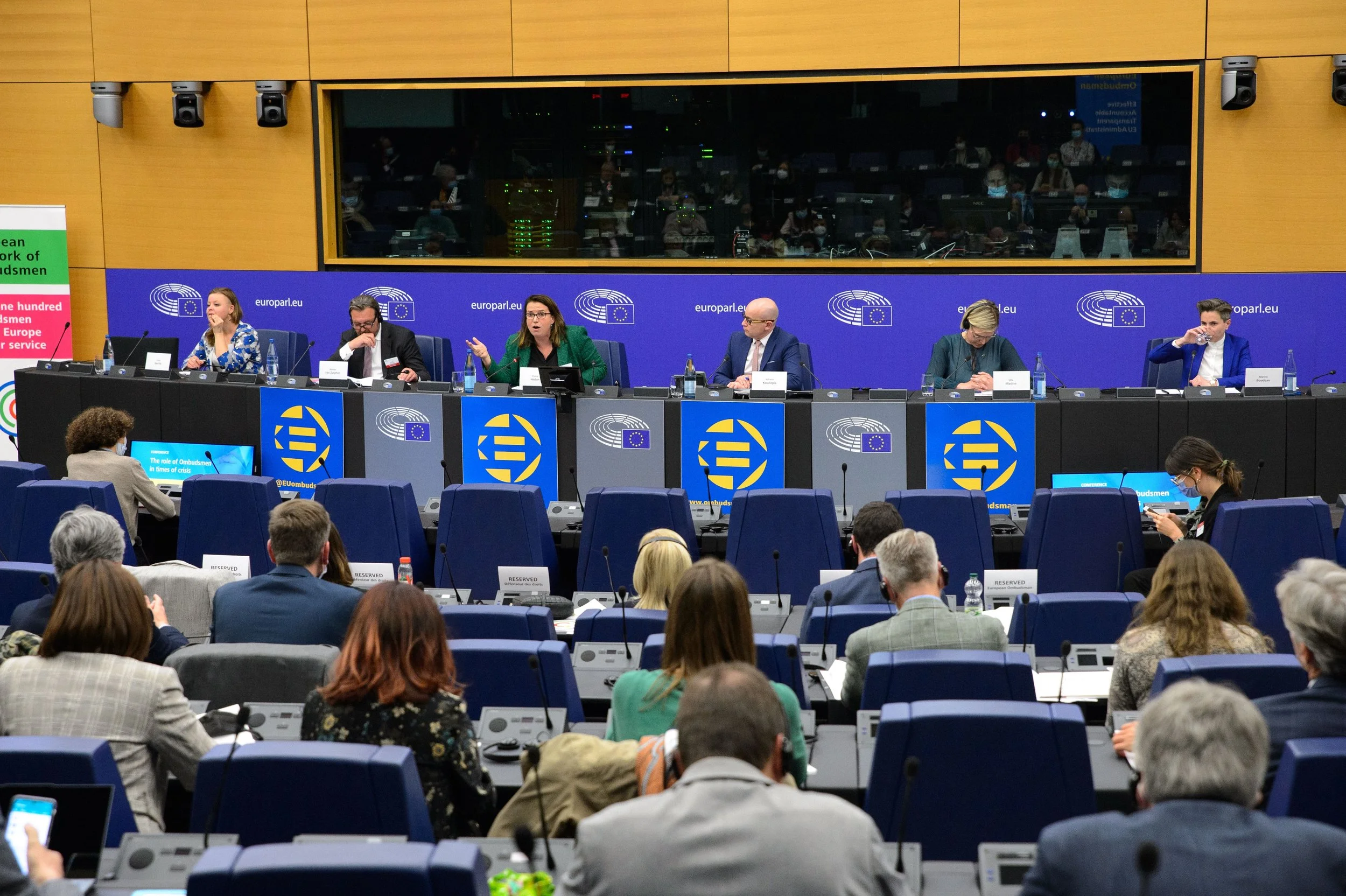Have You Heard of the European Ombudsman?
By Aari Helmelaid, 6 minutes
Imagine that you’re a Dutch corn farmer, who has recently engineered a new type of corn that is juicier than normal corn. This corn, however, is a genetically modified organism (GMO). You decide that you want to sell the corn on the European Market, so you go to the European Commission to ask for authorisation, who then requests the European Food and Safety Authority (EFSA) for an opinion on whether your GMO corn is safely marketable. After a few months, you receive a response from the European Commission refusing the authorisation on the basis of a negative opinion of EFSA. You, unfortunately, don’t speak English, so you ask for the document in Dutch explaining the rationale for the refusal, but the Commission refuses to do so. This makes you feel that you were mistreated by the Commission, so you start wondering whether you can do something about this bad administrative conduct. Going to the court must be too tedious, too expensive for this concern surely...so you sit down to research and discover the fascinating European Ombudsman and realize that you can address a complaint to them!
What is the European Ombudsman?
Just like most countries have an Ombudsman tasked with investigating the misconduct of state actors, so does the European Union.
The European Ombudsman carries out political supervision of the EU institutions. The Ombudsman seeks to hold European Union institutions, agencies and bodies, to account.
Two essential roles of the Ombudsman are presented:
First, the Ombudsman provides a non-judicial mode of individual redress against public administration.
Second, they contribute to the improvement of public administration and support the observance of the principle of good administration. EU law foresees the right to good administration in Article 41 of the Charter of Fundamental Rights. Good administration includes the right of every person to be heard, the right to access their file, and the obligation of the administration to give reasons for its decisions.
The European Ombudsman was established through the Treaty of Maastricht, concluded in 1992. The first European Ombudsman was elected by the European Parliament in 1995. The current European Ombudsman is Emily O’Reilly from Ireland, who was elected in 2013 and reelected in 2019. The Ombudsman can hold office for a term of 5 years, which is renewable once. Hence, the next European Ombudsman should be chosen in 2024.
The Ombudsman is constitutionally recognised in Art. 24 and Art. 228 TFEU, also Art. 43 Charter of Fundamental Rights as a fundamental right in relation to public administration.
The Ombudsman has a function to investigate complaints and uncover examples of maladministration in the actions of EU institutions and bodies. As to the legal status of the European Ombudsman, they occupy a unique position between the citizens and the institutions of the EU. The Ombudsman is an independent institution, clarifying that they shall not take instructions from any government, institution or entity, including those of the European Union. They cannot be called an agency either. Although its function entails adjudicating qualities in the sense that the Ombudsman must assess whether an EU entity is acting in accordance with good administration, it cannot be considered a judicial body.
Maladministration may occur if an EU authority fails to act in accordance with EU law. This includes the treaties, the Charter of Fundamental Rights, and internal codes of conduct in EU bodies. Furthermore, the Ombudsman develops framework standards for administrators.
European Network of Ombudsmen
Aside from its investigative functions, the activities of the European Ombudsman are supported by the European Network of Ombudsmen (ENO), which consists of the ombudsmen or equivalent figures, of the member states and surrounding countries. The ENO functions on a voluntary basis. National and regional ombudsmen deal with complaints against public authorities of the Member States, including complaints that relate to activities that are within the scope of EU law. To safeguard people’s rights under EU law, the Network facilitates cooperation between ombudsmen on matters of common interest. Through parallel investigations, the European Ombudsman and ENO members work together to look into issues that involve the EU administration and national or regional administrations.
Investigation
The Ombudsman has the competence to investigate cases of maladministration in two cases: either following a complaint submitted directly by an applicant or through a member of the European Parliament, or through their own initiative. EU institutions and bodies are obliged to supply the Ombudsman with any information requested and provide access to files. Furthermore, the Ombudsman may conduct on-the-spot investigations, and take copies of relevant material from the site. The staff of the institutions may also be required to testify in front of the Ombudsman.
The Ombudsman sticks strictly to the assessment of maladministration, as the review of any other actions of the entity would cross into the territory of judicial review. Maladministration can arise from a wide variety of behaviour, even the lack of observance of time limits for administrative procedures by the Institutions could amount to an investigable case of maladministration.
In the case that the Ombudsman determines that maladministration has taken place, they may issue a recommendation. If it is possible to reverse the maladministrative practice, then an amicable solution is sought through the recommendation. If the conduct is irreversible, then the Ombudsman closes the case with a reasoned decision.
If an amicable solution is not found, then the European Ombudsman sends a report to the institution responsible and the complainant. Within 3 months, the body or agency must provide a detailed opinion, accept recommendations and set out steps to implement recommendations. At this point, the body being addressed can still refuse to implement any changes. As a last resort, a special report is sent to the institutions concerned, the claimant and the European Parliament. The involvement of the Parliament puts more political pressure on the institution or body engaging in misconduct.
The main advantages of the Ombudsman complaint procedure are that it is relatively fast, cost-free and offers an alternative forum for administrative litigation not involving tedious judicial proceedings. Arguably, the biggest disadvantage to the Ombudsman is its informal nature, since Ombudsman recommendations are non-binding.
What has the European Ombudsman achieved?
You may ask yourself whether the European Ombudsman had any concrete influence on the administrative supervision of the EU. Some initiatives of the European Ombudsman are certainly worthy of mention. In the Revolving Doors case of 2019, the Ombudsman opened an inquiry after the former executive director of the European Banking Authority (EBA) changed to the position of CEO of the Association for Financial Markets in Europe. The Ombudsman held that the EBA should have forbidden such a change of job, given the high risks of conflict of interests. The Ombudsman recommended that EBA should forbid, with clear criteria, senior staff members from moving to certain positions after their term of office and access to confidential information should stop once it was known that a member of staff was taking up another position. The EBA agreed to implement the Ombudsman's recommendations.
Most Complaints to the Ombudsman concern transparency. For example, the case of 357/2019/FP is noteworthy. Initially, the European Securities and Markets Authority refused to grant public access to documents relating to contacts with stakeholders. The European Ombudsman opened an inquiry following a complaint and verified that some internal notes of meetings should have been disclosed. ESMA agreed with the recommendation and later disclosed to the complainant parts of eight documents.
© European Union
While it is true that the European Ombudsman is merely an independent supervisory body, having at their disposal only non-legal means, their effect on the political functioning and internal administrative behaviours of EU entities cannot be underestimated. Changes pushed through by the Ombudsman may seem minor to an average EU citizen, but over time they accumulate to create better administrative practices across the Union.


